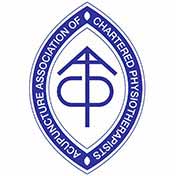There are a number of differing types of neck problems, arising from various sources. Some cause pain which is local to the neck only, while others can cause pain to refer into the upper limb, shoulder blade or head. Neck pain can be incredibly distracting, limit normal daily activities and prevent sleep.
Postural neck pain
 This usually comes on gradually over time, as a result of abnormal postures, sustained poor posture, inadequate seating at work and/or desk set-up, or even as a result of poor posture elsewhere in the lower back and pelvis. Often pain starts out as a little 'niggle' or ache but it can develop into a constant soreness that is difficult to change. Poor / repetitive abnormal postures cause stresses to occur within the soft tissues and inflammation to build around the associated joints, causing tension and pain. In more severe cases, neck stiffness occurs as the joints and soft tissues become too painful to move fully, the spinal discs can be affected by abnormal loading, and nerve roots can become irritated.
This usually comes on gradually over time, as a result of abnormal postures, sustained poor posture, inadequate seating at work and/or desk set-up, or even as a result of poor posture elsewhere in the lower back and pelvis. Often pain starts out as a little 'niggle' or ache but it can develop into a constant soreness that is difficult to change. Poor / repetitive abnormal postures cause stresses to occur within the soft tissues and inflammation to build around the associated joints, causing tension and pain. In more severe cases, neck stiffness occurs as the joints and soft tissues become too painful to move fully, the spinal discs can be affected by abnormal loading, and nerve roots can become irritated.
This type of problem is normally managed very successfully through postural correction, ergonomic modifications, specific stretches and exercises, and manual therapy to address the soft tissue and joint tightness.
Whiplash associated injuries
This type of injury occurs when the neck and head are moved very suddenly in one or more directions, causing injury to occur to structures that are place quickly on strain. The most common way to sustain such an injury is during a car accident, for example when hit from behind by another car', but can equally occur when tripping and falling, or being pushed over suddenly, as the head and neck may be jolted reproducing a similar type of strain. Unless huge velocities are involved, more often than not, the main tissues injured are the small ligaments of the joints of the neck, the surrounding muscles and the associated facet joints of the neck.
Common symptoms can include pain, stiffness, muscle tension, and sometimes associated headaches. On occasion, visual disturbances, numbness and tingling in the arms and hands can occur, but often these are transient and do settle fully in time.
Physiotherapy can be very useful for this type of injury and recommended at an early stage post-injury in order to restore normal movement as soon as possible and reduce pain. Specific exercises and advice can be issued, alongside the application of manual therapy techniques in order to prevent chronic neck difficulties from arising.
Nerve root irritation ('trapped nerve')
This can be quite possibly the most painful condition arising from the musculoskeletal system. As nerves are the most sensitive structures in our bodies, when they become irritated, the pain they cause is often indescribable. Reassuringly, although symptoms can be awful, the magnitude of the symptoms rarely reflect the seriousness of the pathology…in other words, although they can be incredibly painful, often the problem is relatively simple and can be easily resolved with physiotherapy. Associated symptoms can include tingling or numbness in the upper limb and loss of grip strength, and on some occasions, facial symptoms including jaw ache and facial tingling when nerves from higher levels within the neck are involved.
Nerve roots can become irritated or 'trapped' by a number of sources such as tight overlying muscles, stiff or 'jammed' facet joints, abnormal postures, disc protrusions, and degenerative conditions of the neck (wear and tear) which causes reduced joint space and therefore subsequent pressure on the emerging nerve roots.
Physiotherapy treatment technique can include spinal joint mobilisations, soft tissue release, neural mobilisations and a programme of specific exercises and postural correction, dependent upon the cause of the problem. Acupuncture can also be useful in providing much needed pain relief.
Wry neck / torticollis
This is when the head becomes twisted or tilted to one particular side, seemingly very suddenly, and is extremely painful (and sometimes feels impossible) to move back into the normal position. In many cases, this condition presents when an individual wakes on a morning, having gone to bed with no problems the night before. Again, as with nerve root irritation (see above), the magnitude of the symptoms often do not indicate a serious problem and the cause is usually either a muscle strain or facet joint inflammation (or a combination of the two) which is preventing movement and causing pain. Though it may be painful for a few days, the problem often fully resolves relatively quickly. Only in rare cases does this suggest serious pathology.
Physiotherapy can help with reducing the pain and restoring the normal movement through the use of specific manual therapy techniques, stretches and exercises and acupuncture can also prove useful in settling pain and muscle spasm.












